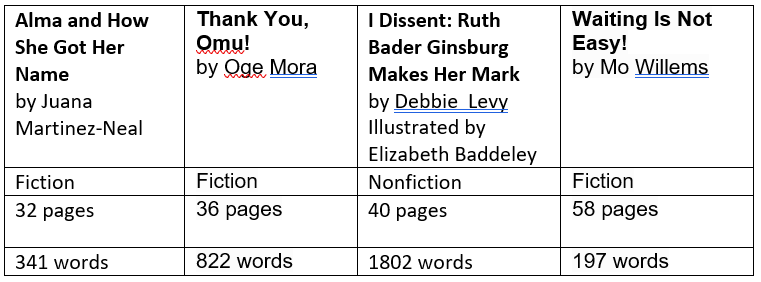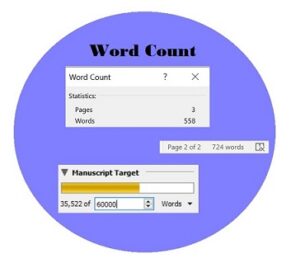As you develop your story, there are so many components to consider and perfect: a strong character arc, varied pacing, stellar dialogue, beautiful descriptions… the list goes on and on. But one factor you must always consider is word count.
If your novel is too short, it might not be considered ‘meaty’ enough for the age group. If your novel is too long, agents and publishers might worry that it has a ‘saggy middle’ or is filled with fluff. And for picture books, the current trend is definitely shorter over longer, but that can look very different depending on the age of the targeted audience and whether the book is fiction or non-fiction.
So what do you do?
First, because this can change over time, research the current trends for word length for the type of book you are writing (type something like “word length for picture books” in the search engine and see what you get). Here’s an article from Writer’s Digest to get you started.
Second, find comparison (comps) and/or mentor texts. Story Spinner Susan Wroble wrote a great post on how to do this.
Third, use a fantastic resource like Accelerated Reader Bookfinder (www.arbookfind.com) to see how those comp and mentor texts measure up when it comes to word count.
When you search for a book, AR Bookfinder will give you a lot of information (short blurb, ATOS book level, interest level, rating, whether it is fiction or non-fiction, subtopics, etc.), but most importantly (for this post) it will give you the specific word count for the book.
This is critical because page length can vary – just think about the difference between a story submitted in 11 point font, single spaced, with ½ inch margins vs. a double spaced, 14 point font, with 2-inch margins. This is why the industry is so specific about the formatting that you use when submitting materials – it gives some consistency about what ‘5 pages’ really means. But when you’re publishing a book, you have no such limitations. The pages can differ in size of the book itself, in margins, in fonts and font size… the list goes on and on. While, in general, more pages means more words, two books that are 250 physical pages can have very different word lengths. Nowhere can you see that more than in picture books.
Here are four examples:

** If you have trouble seeing the table, the information is written at the end of the blog post
These are four wonderful books, all targeted to the K-3 reader, but they couldn’t be more different. And that is reflected not only in the way the books are written (prose vs. dialogue, for example) but in the word length. For these four books, the book with the most pages has the smallest number of words. Seeing how your book stacks up in word length to a book similar to yours can give you a good sense as to whether you are hitting the mark.
If your picture book is 700 words, and your comp titles all range from 400-500, your book may be too long for your target audience. If your mentor texts are 45,000 – 50,000 words, and your novel is 17,000 words, again — potential problem. Your book lengths don’t need to be an exact match, but hitting market expectations is important in securing an agent and/or a publisher, or in getting readers if you decide to indie publish.
And … don’t use a single text to decide if you are hitting this mark because, just like rules for ‘i before e’ there are exceptions out there. Could your book be double (or half) the expected length and still sell? Of course it could! But make sure when you decide that your final manuscript is really final, you know how your book measures up.
***
If you couldn’t read the table, here is the information on the four picture books:
Alma and How She Got Her Name by Juana Martinez-Neal
Fiction, 32 pages, 341 words
Thank You, Omu! by Oge Mora
Fiction, 36 pages, 822 words
I Dissent: Ruth Bader Ginsburg Makes Her Mark by Debbie Levy, Illustrated by Elizabeth Baddeley
Nonfiction, 40 pages, 1802 words
Waiting Is Not Easy! by Mo Willems
Fiction, 58 pages, 197 words

